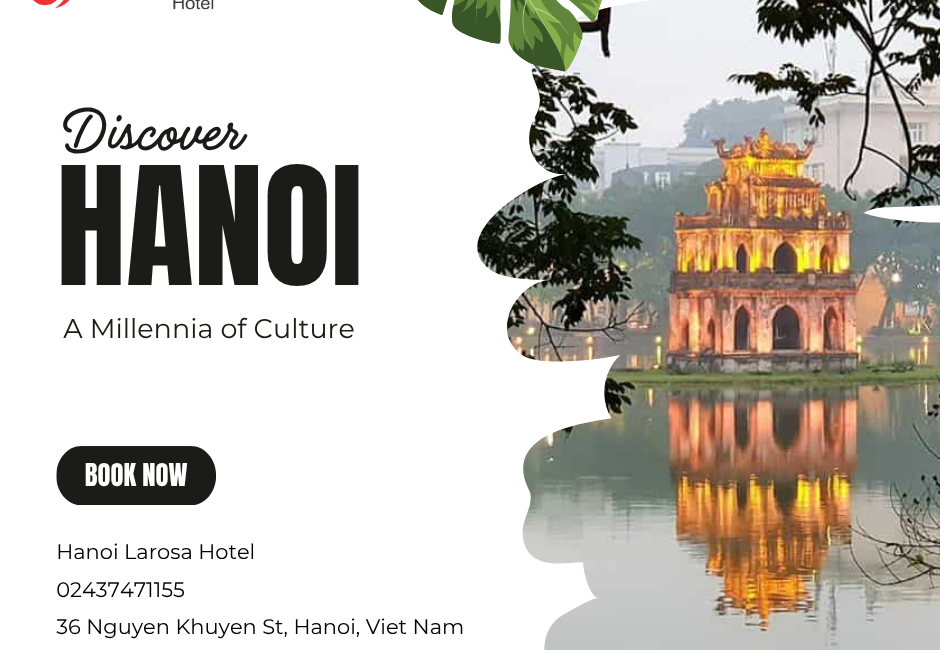
Discover Hanoi: A Millennia of Culture – Your Complete Travel Guide from A to Z
Hanoi, the heart of Vietnam, always holds a special allure for both domestic and international visitors. Its ancient moss-covered streets, the somber French colonial architecture, the street vendors with their distinct local flavors, and the bustling traffic… all blend together to create a Hanoi that is both ancient and modern, vibrant and peaceful. In Hanoi, every visitor can find something interesting to explore in their own way.
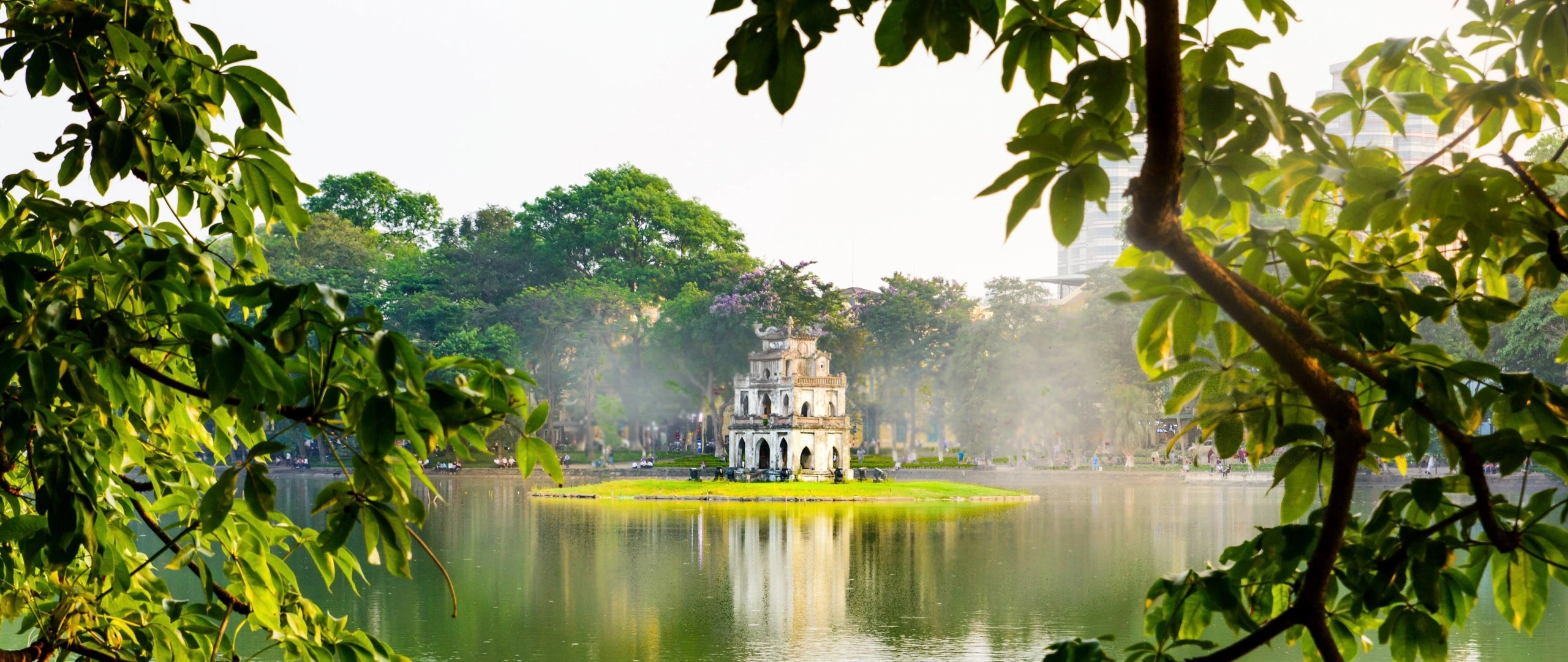
This article from Hanoi Larosa Hotel will serve as a detailed Hanoi travel guide, helping you plan a complete journey to discover the beauty and culture of the thousand-year-old capital.
1. Hanoi – A Confluence of Culture and History
Hanoi is not only the political capital but also the long-standing cultural and historical center of Vietnam. With over 3840 historical and cultural relics, including 1164 national-level sites, Hanoi proudly possesses the most relics in the country. It is also honored to have several intangible cultural heritages recognized by UNESCO, such as Ca Tru singing, the Mother Goddesses worship, the doctoral steles of the Temple of Literature – Imperial Academy, and the tug-of-war ritual.

Located in the heart of the famous Northern Vietnam tourism triangle (Ninh Binh – Quang Ninh – Lao Cai), Hanoi is an ideal starting point to explore the diverse beauty of Northern Vietnam. Traveling to Hanoi offers countless different experiences, from exploring historical and spiritual cultural sites to relaxing retreats, participating in conferences and seminars, or immersing oneself in the atmosphere of traditional festivals.
2. Hanoi Weather: Which Season is Best to Visit?
Hanoi has four distinct seasons, each with its own beauty and experiences:
- Spring (February – April): The weather is cool with light drizzle, trees sprout buds, and flowers bloom. This is an ideal time for spring outings, visiting famous flower villages like Nhat Tan, Tay Tuu, or Quang Ba flower market.
- Summer (May – July): The weather is hot and humid, suitable for recreational activities at parks, shopping centers, or strolling around West Lake enjoying Trang Tien ice cream.
- Autumn (August – October): Considered the most beloved season, Hanoi’s autumn has cool weather, clear blue skies, a gentle breeze, falling yellow leaves, and the fragrant scent of milk flowers. This is a wonderful time to stroll along streets lined with yellow leaves like Phan Dinh Phung, watch the sunset over West Lake, and enjoy autumn specialties.
- Winter (November – January): The weather is cold but brings a somber and romantic beauty. Walking on streets like Dinh Le and Phan Dinh Phung on winter days, you will easily encounter stalls selling pure white daisy flowers.
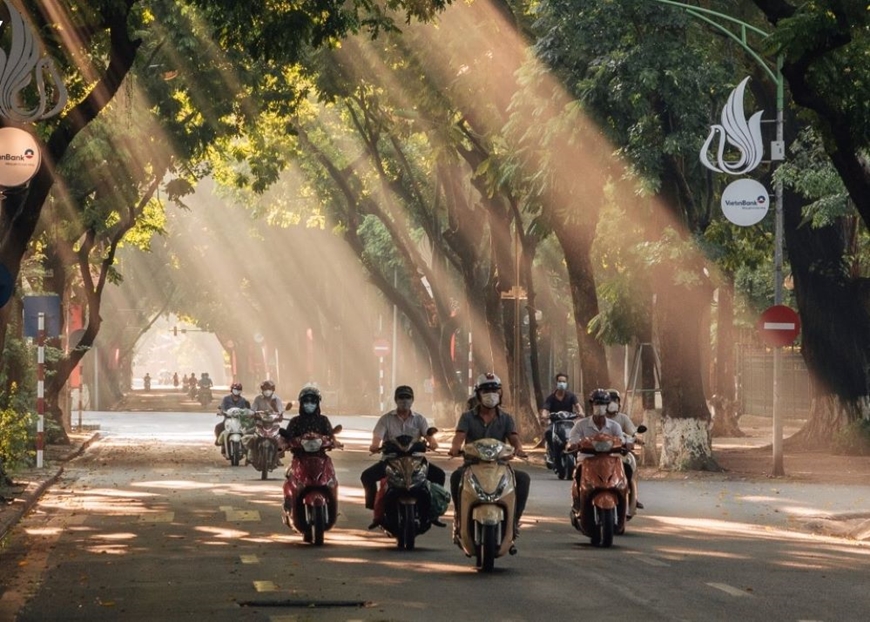
However, according to many travelers, autumn (August – November) and spring (March – April) are the best times to visit Hanoi, when the weather is pleasant and the natural scenery is beautiful.
3. Must-Visit Tourist Attractions in Hanoi
Hanoi boasts countless attractive destinations, imbued with unique historical, cultural, and architectural imprints:
Hoan Kiem Lake (Sword Lake): The Green Heart of the Capital
Located right in the center of Hanoi, Hoan Kiem Lake is not only a beautiful lake but also a historical and cultural symbol of the Capital. The clear blue lake reflects the ancient Turtle Tower, the majestic Ngoc Son Temple, and the graceful red The Huc Bridge.
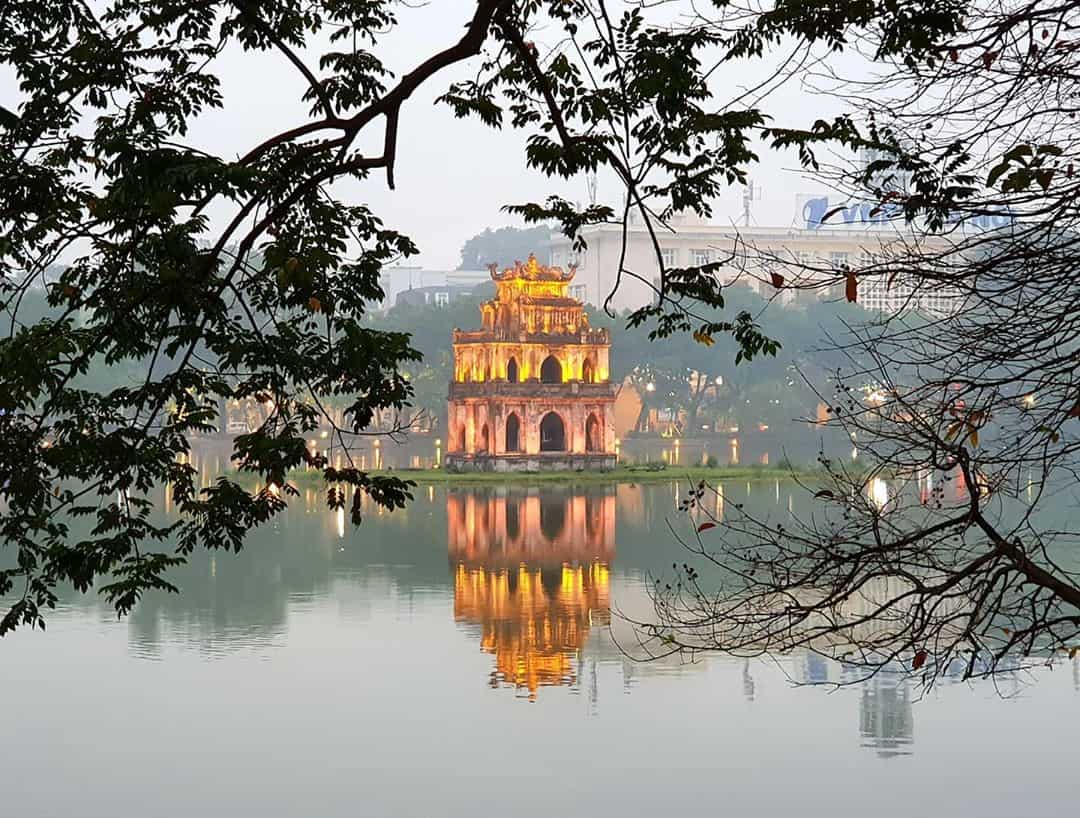
Ho Chi Minh Mausoleum
The vast Ba Dinh Square is where the Ho Chi Minh Mausoleum is located, a solemn and sacred place for every Vietnamese citizen. This is where President Ho Chi Minh read the Declaration of Independence establishing the Democratic Republic of Vietnam, and it is also his final resting place.

Witnessing the flag-raising ceremony at 6:00 AM daily and the flag-lowering ceremony at 9:00 PM at Ba Dinh Square is a special and moving experience.
St. Joseph’s Cathedral: Gothic Architecture in the Heart of the Old Quarter
Located on Nha Chung Street, St. Joseph’s Cathedral is an ancient Gothic architectural work built by the French in the late 19th century. With its solemn and ancient beauty, the cathedral is not only a place of worship for the Catholic community but also a unique architectural symbol and a famous check-in point of the Capital.
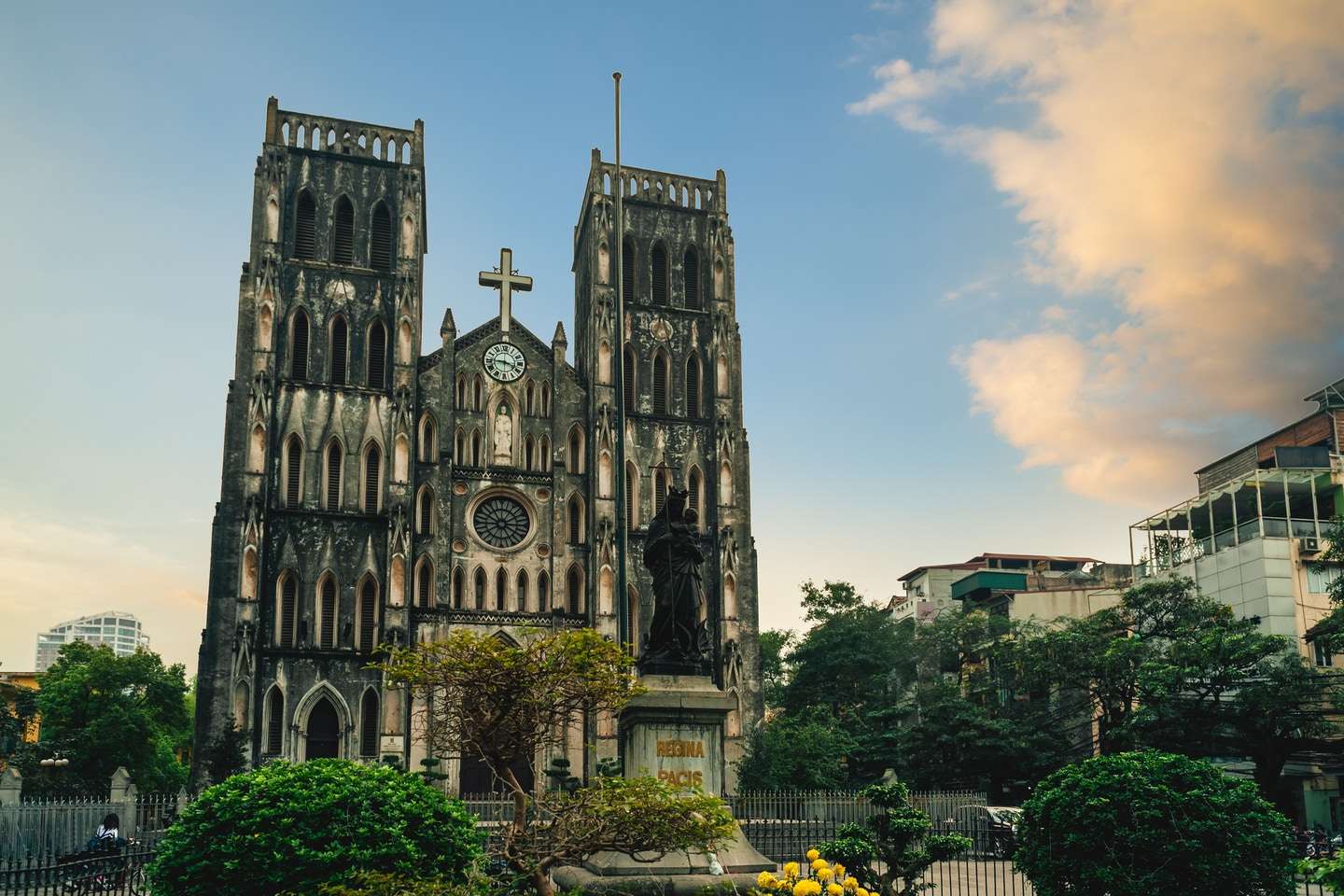
Admire the impressive facade with soaring bell towers, colorful stained-glass windows, and intricate decorative details in the Gothic style. Stepping inside, you will feel the quiet, solemn atmosphere with soaring columns and soft light.
Attend mass (if appropriate) to experience the solemn religious atmosphere. The area around the cathedral is also bustling with many European-style cafes and restaurants.
Museums: Preserving the Soul of National History and Culture
Hanoi is home to many important museums, preserving valuable historical, cultural, and artistic values of Vietnam:
- Vietnam Museum of Ethnology: A place to display and introduce the culture and customs of the 54 ethnic groups of Vietnam through artifacts, images, and vivid models. The outdoor area with traditional houses of the ethnic groups is also worth exploring.
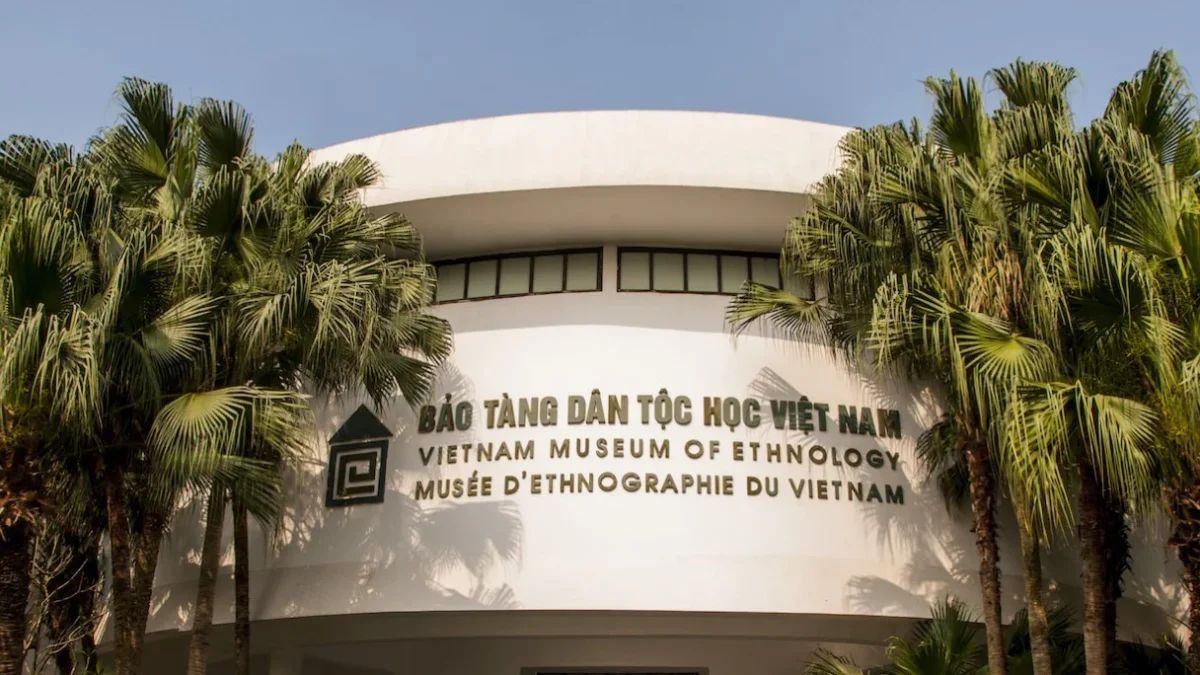
- Vietnam Women’s Museum: Honors the role and contributions of Vietnamese women in history and society through collections of artifacts, moving stories, and thematic exhibitions.
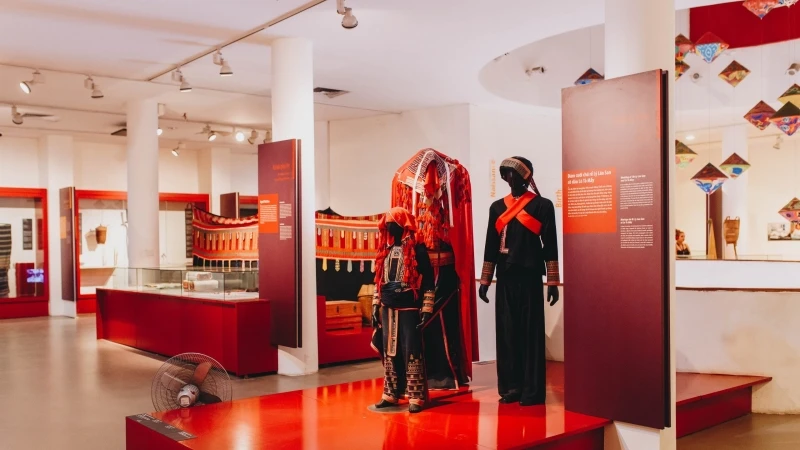
- National Museum of Vietnamese History: Displays valuable artifacts and documents about Vietnamese history from prehistoric times to the present.

- Hanoi Museum: Introduces the history, culture, and development of Hanoi through the ages. The unique architecture of the museum is also an attraction.
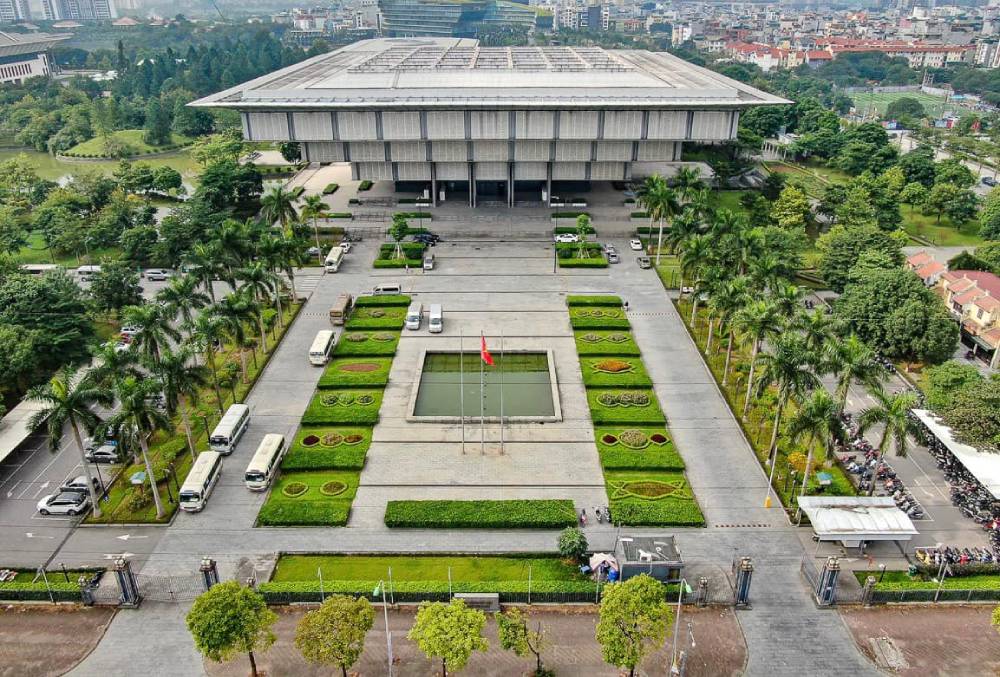
- Hoa Lo Prison: A historical relic marking the arduous struggle and indomitable spirit of Vietnamese revolutionary soldiers during the resistance war against the French.
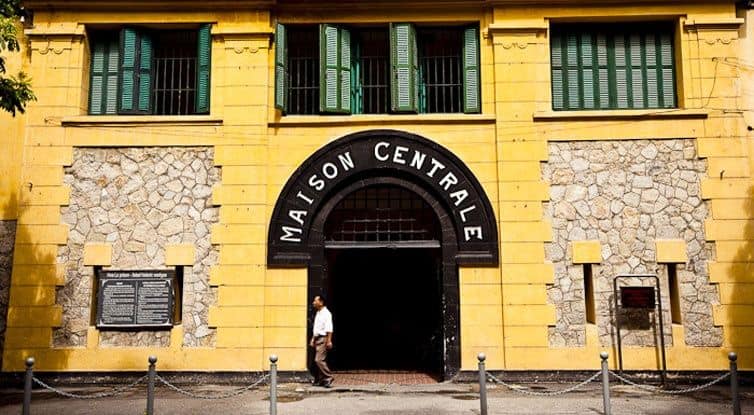
Hanoi Old Quarter (36 Streets)
Located in the west and north of Hoan Kiem Lake, the Hanoi Old Quarter is a unique architectural complex with narrow streets, moss-covered tiled houses, and closely packed shops. This place still retains a strong traditional architectural style and is home to many long-standing craft villages.

Let your feet guide you through streets like Hang Dao (Silk Street), Hang Ngang (Cotton Street), Hang Bac (Silver Street), Ma May Street… each street has its own unique trading characteristics. Explore the ancient houses and moss-covered temples hidden amidst the bustling streets.

Enjoy the rich street food, buy souvenirs, and observe the daily life of Hanoi people. Especially in the evening, Ta Hien and Luong Ngoc Quyen streets become lively with many bars and restaurants attracting tourists.
West Lake (Ho Tay): A Peaceful Space Amidst Urban Bustle
As the largest natural freshwater lake in Hanoi, West Lake offers a relaxing, fresh, and romantic space. With its vast area, the lake is an ideal place for strolling, cycling, and watching the beautiful sunset.
.png)
Walk along the tree-lined lakeside roads, visit famous places like the ancient Tran Quoc Pagoda located on an island in the middle of the lake, Tu Hoa Street with its romantic cafes, the colorful West Lake flower valley, or find the famous lonely tree for photos. Rent a kayak or SUP board to explore the lake surface and enjoy the fresh air. In the evening, the lakeside area has many restaurants and cafes with beautiful views.
Tran Quoc Pagoda: An Ancient and Sacred Pagoda by West Lake
Located on a small island on the east side of West Lake, Tran Quoc Pagoda is one of the oldest and most sacred pagodas in Hanoi. With a history of over 1500 years, the pagoda was the Buddhist center of the ancient Thang Long capital.
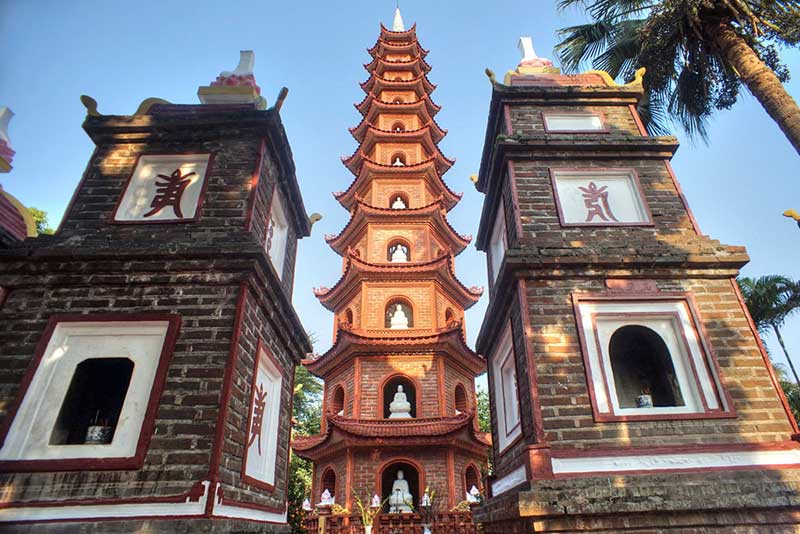
Admire the unique and ancient architecture of the pagoda with its many layers of towers, Buddha statues, and structures bearing strong Buddhist imprints. The tower garden with its ancient towers is a special highlight. Learn about the history and culture of Vietnamese Buddhism. The pagoda offers a peaceful and serene space in the heart of the city.
Temple of Literature – Imperial Academy (Van Mieu – Quoc Tu Giam): Vietnam’s First University
Located on Quoc Tu Giam Street, the Temple of Literature – Imperial Academy is a special national historical and cultural relic complex, and also the first university of Vietnam. It is dedicated to Confucius and the sages who contributed to the nation’s education.

Visit areas such as Van Mieu Gate, Dai Trung Mon, Khue Van Cac (Hanoi’s symbol), Thien Quang Well, the Doctoral Stele House (with 82 stone steles recognized by UNESCO as a World Documentary Heritage), and Hau Cung. Learn about the history of Vietnamese education during the feudal period, and feel the solemn and serene atmosphere of the relic.
Thang Long Imperial Citadel: A Thousand-Year-Old Historical Witness
Located in the center of Hanoi, the Thang Long Imperial Citadel is a World Heritage Site with a rich history of over 1300 years. It was once the center of power for many Vietnamese feudal dynasties.
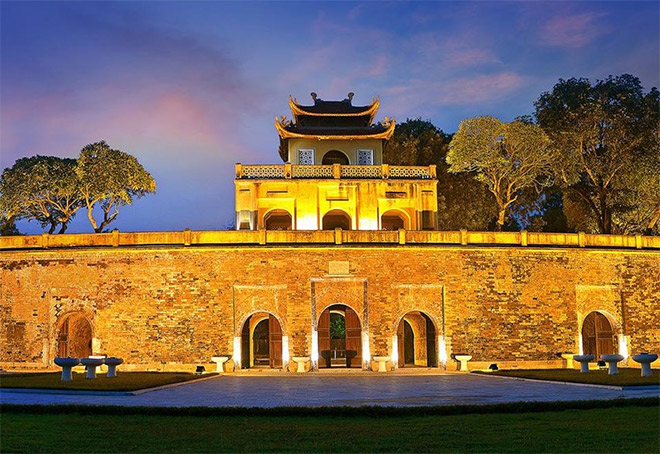
Visit the remaining relics within the Citadel area such as Doan Mon, Kinh Thien Palace, Hau Lau, Bac Mon, and the T1 command bunker. The 18 Hoang Dieu archaeological site is also an interesting place to explore the traces of different historical periods. Learn about the history of Thang Long – Hanoi through the artifacts and stories displayed. The Citadel area often hosts cultural activities and exhibitions.
Ta Hien Street: Hanoi’s “Sleepless Street”
Located in the Old Quarter, Ta Hien is a small but extremely vibrant and bustling street at night, attracting a large number of international tourists. It is home to many bars, restaurants, and sidewalk beer stalls with an open atmosphere and affordable prices.
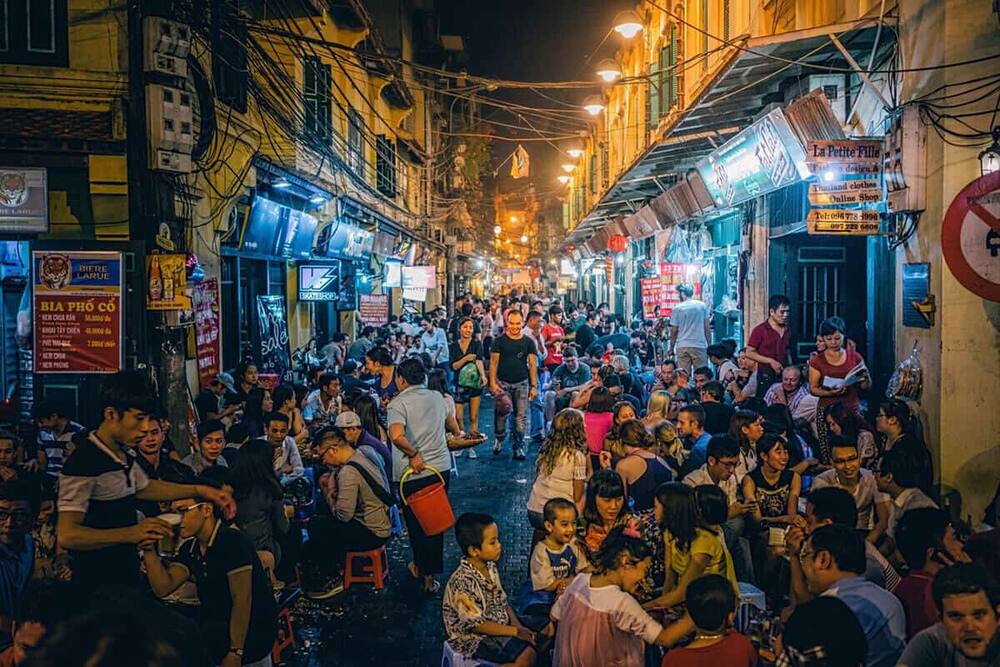
Stroll along the bustling street, enjoy a cool glass of Hanoi draft beer and delicious street food. Immerse yourself in the lively atmosphere and socialize with tourists from all over the world. Ta Hien is an ideal destination for those who want to experience Hanoi’s nightlife.
One Pillar Pagoda (Chua Dien Huu): A Unique Architectural Symbol
Located near the Ho Chi Minh Mausoleum, the One Pillar Pagoda is one of the oldest and most unique pagodas in Vietnam. The pagoda is built on a single pillar in the middle of a small lake, resembling a blooming lotus flower.
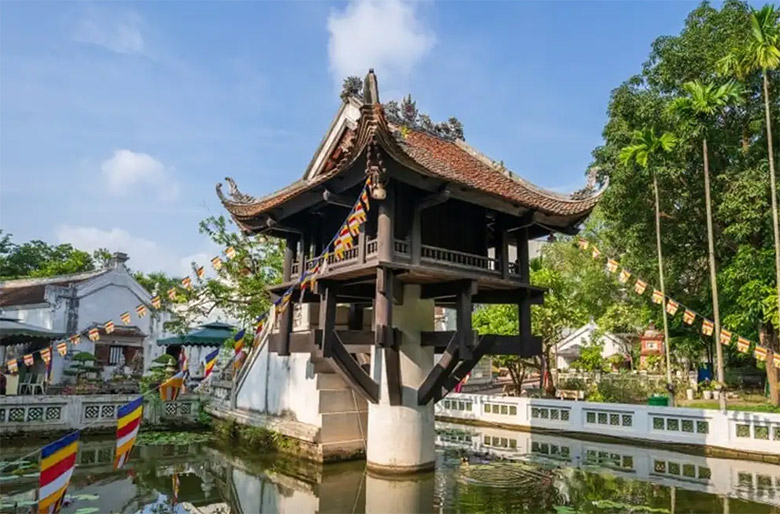
Admire the unique architecture and spiritual significance of the pagoda. The area around the pagoda also has many beautiful architectural works. Learn about the history and legendary story related to the construction of the pagoda.
Hanoi Ceramic Mosaic Mural: A Giant Art Painting by the Red River
Nearly 4km long along the Red River dike, the Hanoi Ceramic Mosaic Mural is a unique and the world’s largest ceramic mosaic artwork. The project was created to commemorate the 1000th anniversary of Thang Long – Hanoi.
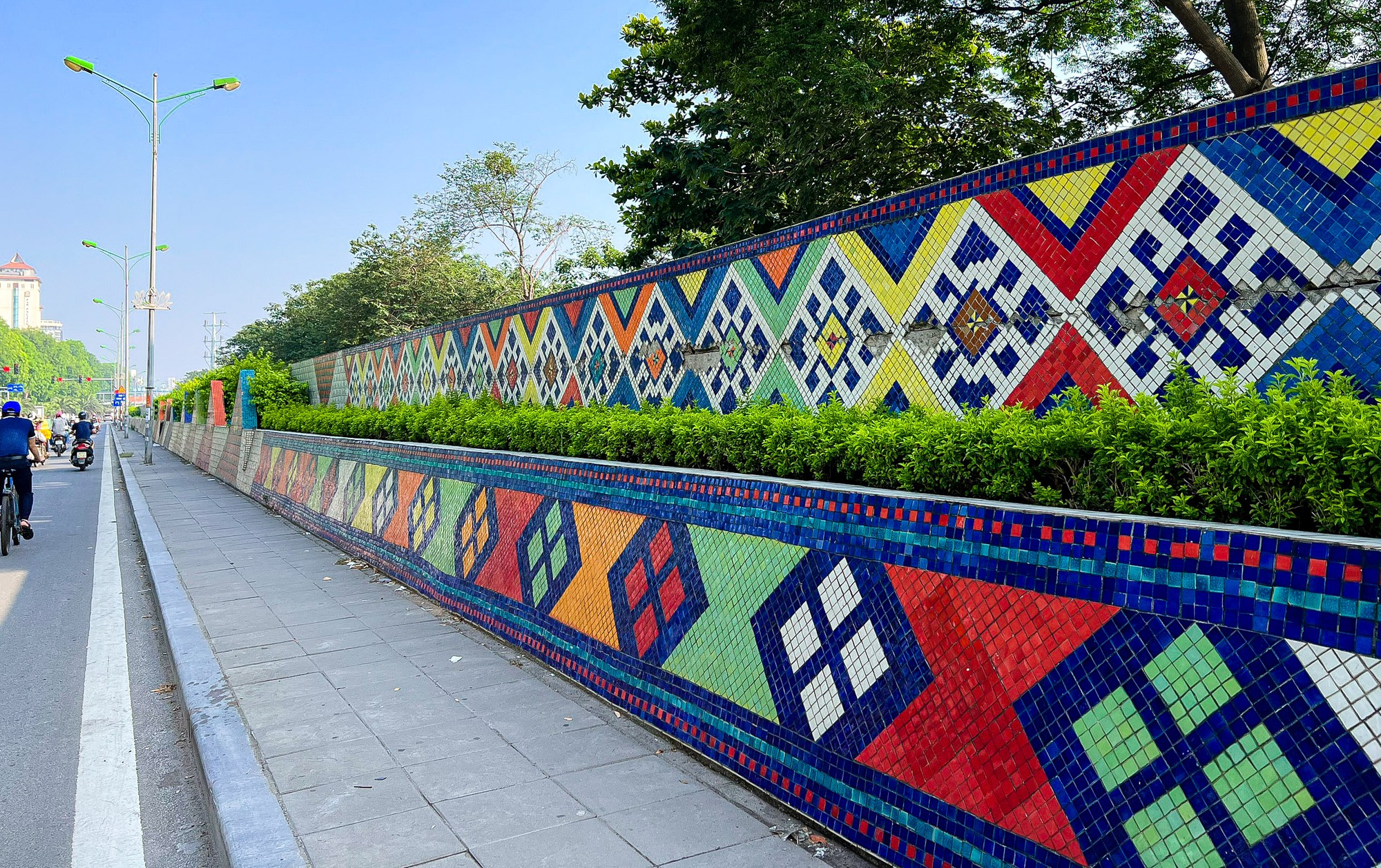
Admire the colorful ceramic paintings with various themes such as Hanoi’s history, Vietnamese legends, national landscapes, and traditional decorative patterns. Stroll along the road to discover unique artworks and capture impressive moments.
Hanoi Larosa Hotel: An Ideal Stop for Your Hanoi Exploration
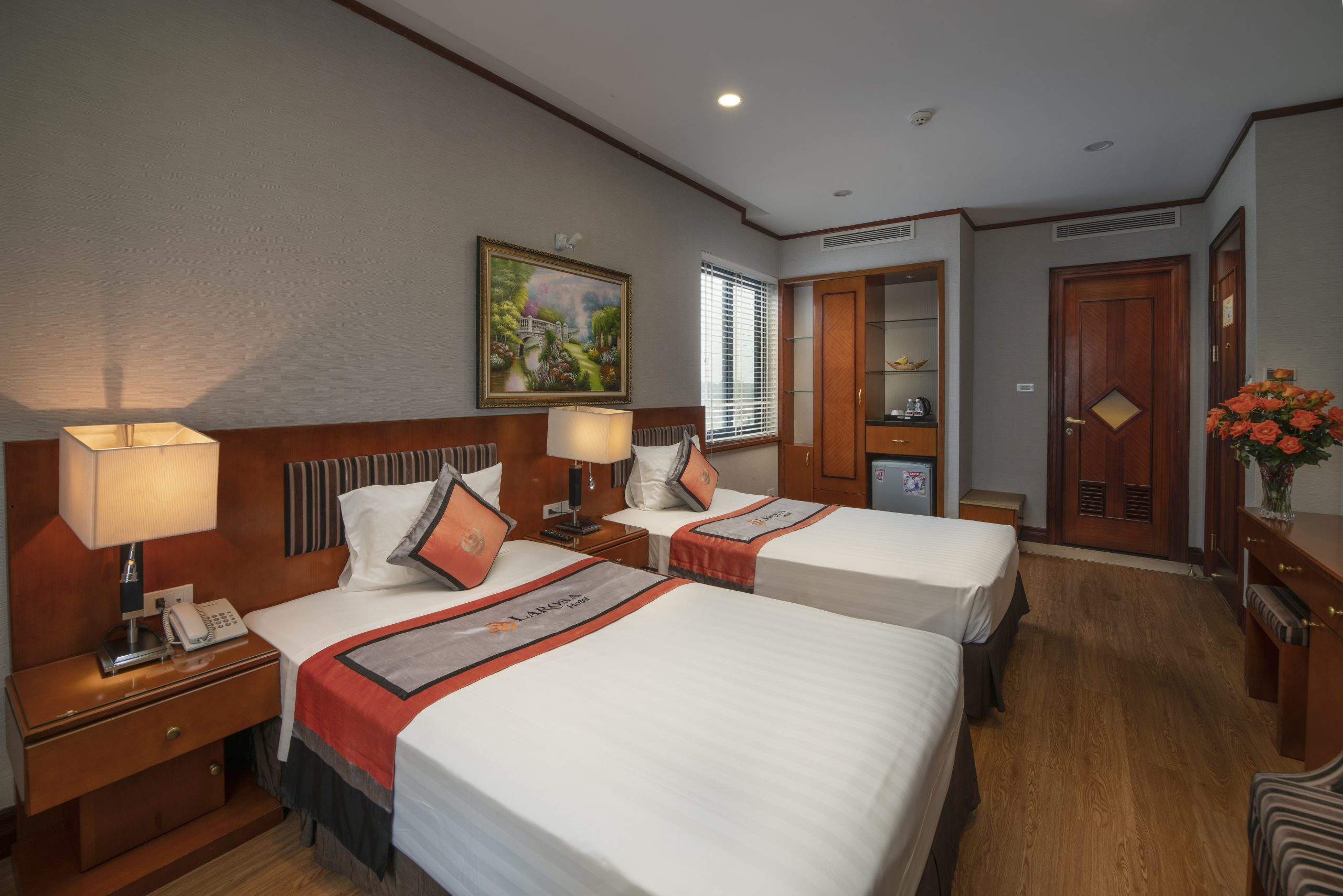
Located in a prime location, Hanoi Larosa Hotel offers excellent convenience for travelers wishing to explore Hanoi’s famous tourist destinations. With its modern and luxurious design, along with professional and dedicated service, Hanoi Larosa Hotel is committed to providing you with a comfortable and memorable stay.
4. Xem Gì Ở Hà Nội? Trải Nghiệm Văn Hóa Đặc Sắc
4. What to See in Hanoi? Unique Cultural Experiences
In addition to visiting famous landmarks, visitors to Hanoi also have the opportunity to enjoy unique traditional art performances:
- Water Puppetry: A unique theatrical art with over 1000 years of history in Vietnam. You can watch water puppetry at the Thang Long Water Puppet Theater or the Vietnam Puppet Theater.
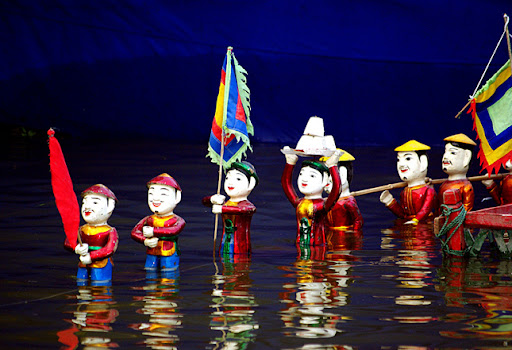
- Listen to Ca Tru: An intangible cultural heritage, a sophisticated form of chamber vocal music. You can enjoy Ca Tru at the Hanoi Ca Tru Club or Thang Long Ca Tru.
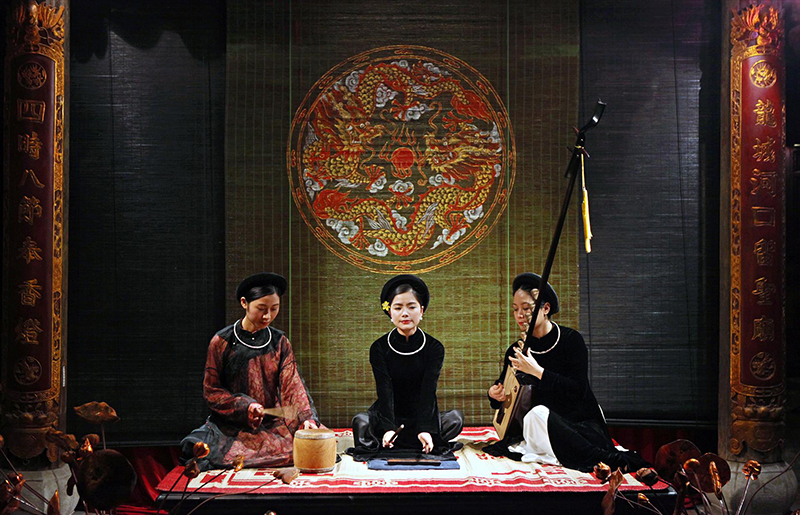
- Panoramic View of Hanoi from Above: Visit the Lotte Center Observation Deck to admire the panoramic beauty of the Capital from the 65th floor.

5. Hanoi Cuisine: Unforgettable Bold Flavors
Hanoi’s cuisine is a delicate combination of sour, spicy, salty, and sweet flavors, deeply rooted in the identity of a thousand-year-old city. You can easily enjoy specialties at sidewalk eateries and traditional restaurants:
- Pho: Vietnam’s national dish, especially beef pho with well-done and rare options. Some famous addresses: Pho Thin, Pho Bat Dan, Pho Tu Lun.
- Bun Cha: Vermicelli served with grilled pork patties and a sweet and sour dipping sauce, fresh herbs. Suggested addresses: Bun Cha Hang Ma, Bun Cha Dac Kim.
- Bun Thang: A sophisticated vermicelli dish with many ingredients such as shredded chicken, shredded fried egg, silk sausage, dried shrimp…
- Bun Moc: Vermicelli with delicious pork meatballs, often served with pork ribs.
- Bun Oc: Vermicelli with crispy boiled snails, a rich and tangy broth.
- Cha Ca La Vong: Delicious grilled catfish served with vermicelli, dill, scallions, and shrimp paste.
- Banh Tom Ho Tay: Crispy shrimp cakes, usually served with fresh herbs and a sweet and sour dipping sauce.
- Banh Cuon: Thin steamed rice rolls filled with minced pork, wood ear mushrooms, fried shallots, dipped in fish sauce.
- Banh Ran: Salty and sweet fried glutinous rice balls with various fillings.
- Egg Coffee: A unique Hanoi beverage, strong black coffee blended with rich egg cream. Famous egg coffee shops: Cafe Dinh, Cafe Giang.
6. What to Buy as Souvenirs in Hanoi? Famous Specialties
When leaving Hanoi, don’t forget to buy some specialties as gifts for loved ones and friends:
- O Mai (Salted Apricots): With a full range of sour, spicy, salty, and sweet flavors, O Mai Hang Duong is a popular snack.
- Com (Young Green Rice): Hanoi’s autumn specialty, the fragrant and chewy Com Lang Vong or Banh Com Hang Than (young rice cake) are excellent choices.
- West Lake Lotus Tea: A delicate gift with the characteristic fragrance of West Lake lotus.
- Van Phuc Silk: Soft, breathable, and colorfast silk with many products such as scarves, shirts, and dresses.
- Bat Trang Ceramics: Unique handmade ceramic and porcelain products from the traditional Bat Trang pottery village.
Hanoi is not just a destination, but also an endless journey of discovering unique layers of culture, history, and cuisine. Let Hanoi Larosa Hotel accompany you on this memorable journey, where every moment is a story to tell.
Detailed Information and Reservations:
Contact for Reservations: Phone: +84 243 747 1155 Email: info@hanoilarosahotel.com Website: www.hanoilarosahotel.com Address: 36 Nguyen Khuyen Street, Hanoi, Vietnam.
0 Comments